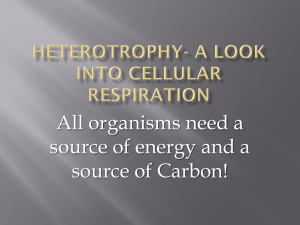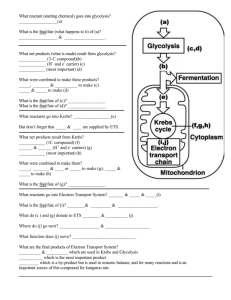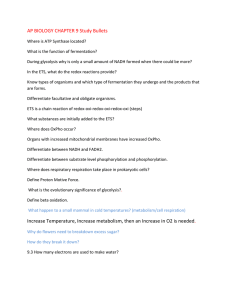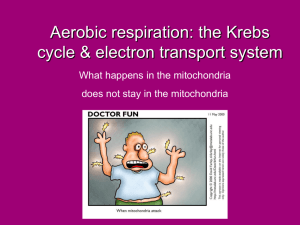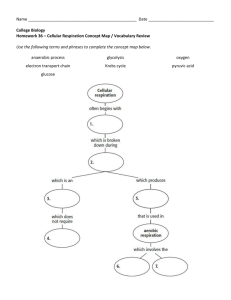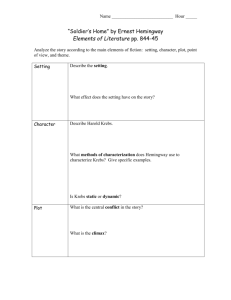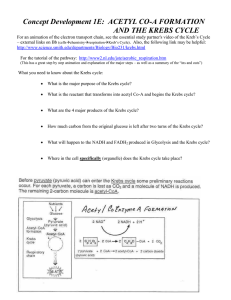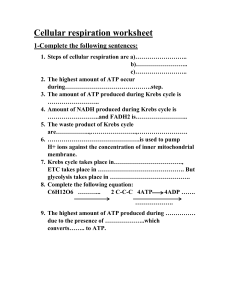AP Biology –Unit 5 Name: Cellular Respiration Worksheet What is
advertisement
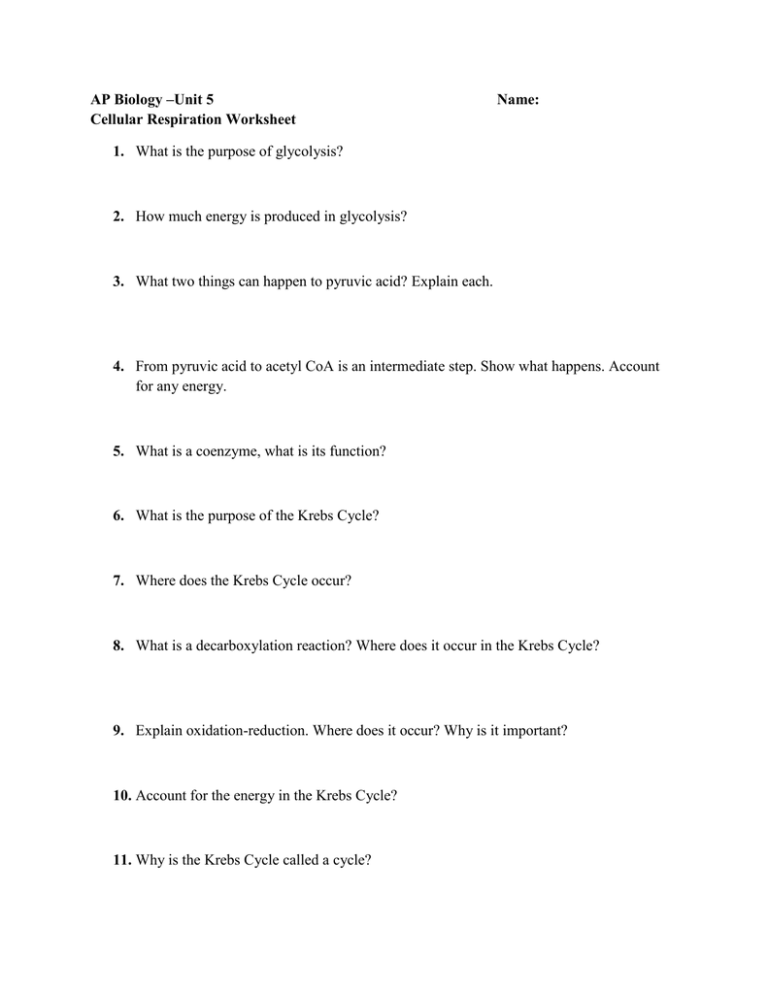
AP Biology –Unit 5 Cellular Respiration Worksheet Name: 1. What is the purpose of glycolysis? 2. How much energy is produced in glycolysis? 3. What two things can happen to pyruvic acid? Explain each. 4. From pyruvic acid to acetyl CoA is an intermediate step. Show what happens. Account for any energy. 5. What is a coenzyme, what is its function? 6. What is the purpose of the Krebs Cycle? 7. Where does the Krebs Cycle occur? 8. What is a decarboxylation reaction? Where does it occur in the Krebs Cycle? 9. Explain oxidation-reduction. Where does it occur? Why is it important? 10. Account for the energy in the Krebs Cycle? 11. Why is the Krebs Cycle called a cycle? 12. What is the Electron Transport System (ETS)? Where does it occur? What sort of reactions does it involve? What is its purpose? 13. What is a cytochrome? 14. Account for the energy produced from 1 NADH and from 1 FADH2. 15. From where do NADH and FADH2 come? 16. How much energy is produced in the ETS from one molecule of glucose? (Show your work.) 17. How are H atoms ionized? 18. What happens to H+ in the ETS? 19. After the H+ leaves the ETS, what continues through the system? How? 20. How does a cell get energy?
